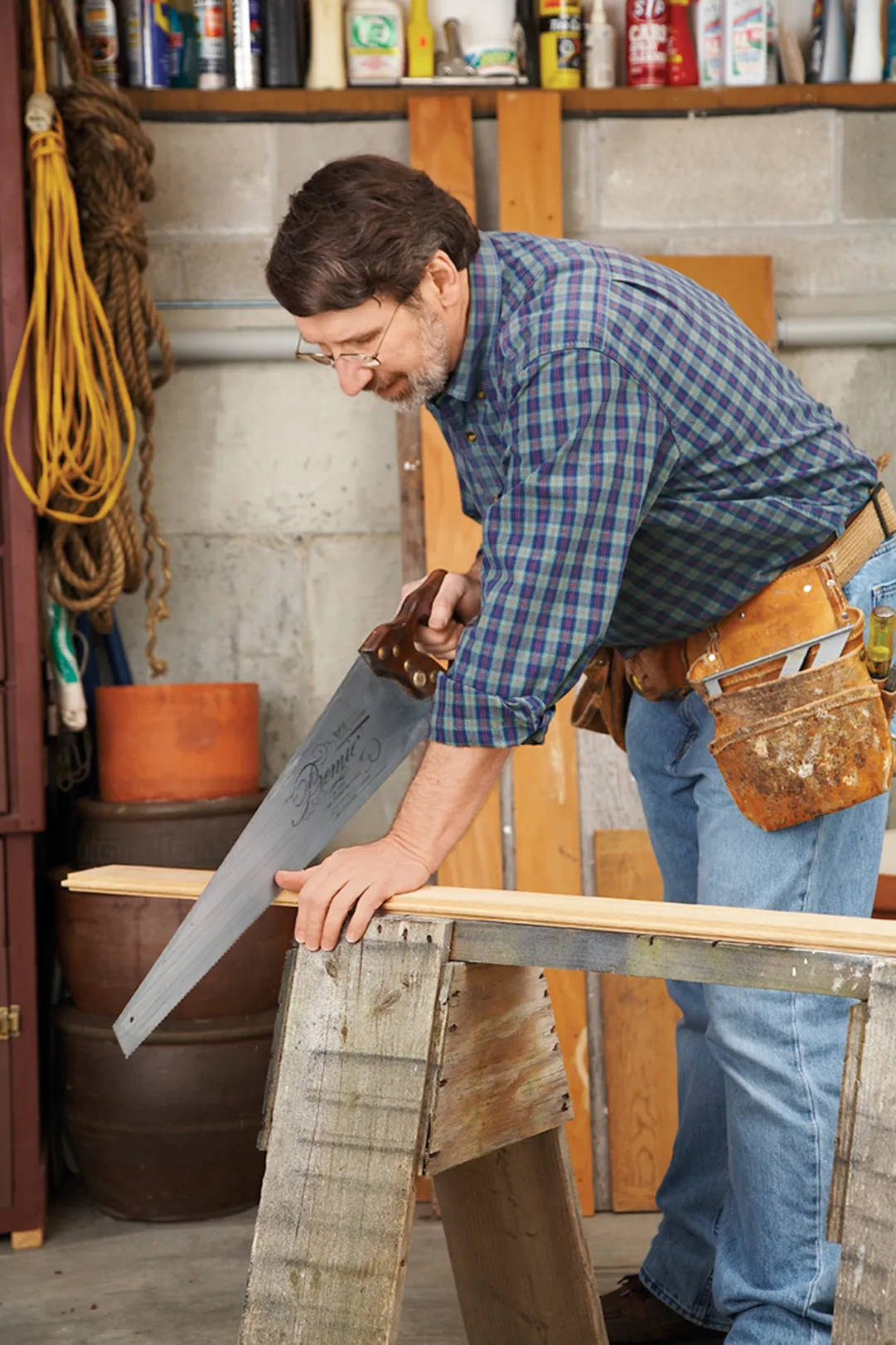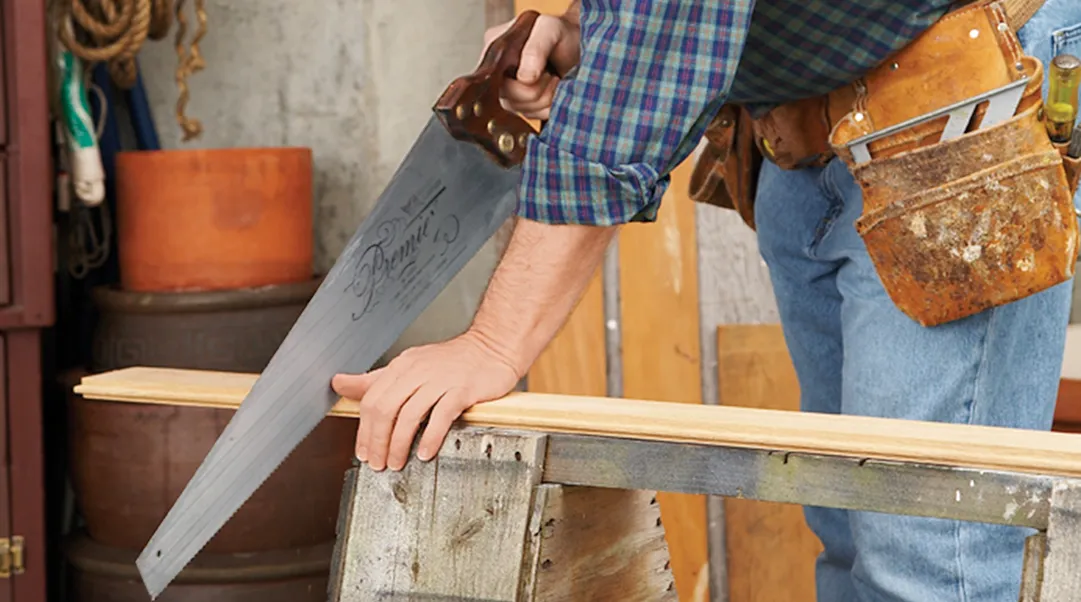
How to Use a Handsaw
To get the most power for the least effort, support the wood at a comfortable height, with the saw at a 45-degree angle above it and your wrist, elbow, and shoulder aligned behind the blade. For fine cuts, saw at a lower angle; lift the handle higherfor aggressive cuts.
Use a three-finger grip. I was taught to hold the saw with my thumb and three fingers and to put my index finger on the handle’s side, pointing down the blade. I feel like I have better control over the saw that way.
Keep it light. Pushing too hard on the saw is counterproductive—it wears out your arm and makes it hard to saw straight. Let the sharp teeth do the work, with a little pressure on the push and little to none on the pull.
Vary your stokes. Start your cuts with a few short pull strokes, then switch to light push strokes. When the blade sinks in ½ inch or so, gradually increase the stroke length until nearly every tooth is working. Near the end of the cut, shorten up your stroke again and increase the blade angle for a clean finish.
How to Know When a Saw Is Dull
You’ll notice that cuts seem to go slower and require more muscle than before, or that you just can’t seem to cut straight, no matter how hard you try. Check your suspicions by holding the teeth up to a strong light. If it reflects off the teeth tips, they’re dull. Light doesn’t reflect off a sharp point. If a saw doesn’t have a dark stripe along its toothed edge, indicating that the teeth have been hardened, then it can be resharpened. Take it to a local sharpening service, which you can find in the Yellow Pages, or look for one online.
Handy Square
Many short toolbox saws have handles with edges set at 90 and 45 degrees from the top edge of the blade so that you can use your saw like a square (Images 2 & 3, at left). Just butt the appropriate edge against your work and draw the cutline. Such handles don’t have the accuracy of a real square, however.
Mirror Trick
When you’re standing in the correct sawing position, it’s not so easy to judge if you’re holding the blade perpendicular to the wood. Here’s a trick that will help when making square crosscuts: Rest the saw on the edge of the wood, and look for the reflection of that same edge in the blade of the saw. Now tilt the blade from side to side until the reflection in the blade lines up with the actual edge of the wood (Image 4, at left). That will tell you that your saw is perpendicular to the wood. Unfortunately, this trick won’t work on rusty blades or ones with antifriction coatings.
Norm’s Tip: If your saw blade gets covered in sticky sap, spritz it with oven cleaner, wait 20 minutes, and wipe it clean.

